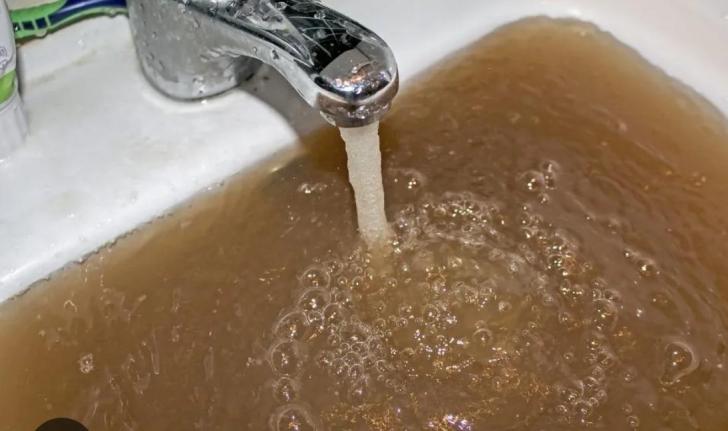News / National
Bulawayo water quality questionable
26 May 2024 at 12:42hrs |
0 Views

Bulawayo is currently experiencing one of its most severe water crises in recent years, with over 88 percent of residents expressing dissatisfaction with the quality of water supplied by the local authority.
These findings come from the 2024 urban nutrition assessment technical report by the Zimbabwe Livelihoods Assessment Committee (ZimLAC). The report also highlights that 92.2 percent of Bulawayo's residents are unhappy with the overall water supply.
The 2024 assessment aimed to estimate urban food insecurity, analyze geographic distribution and severity, and assess urban nutrition to support evidence-based decisions for better nutrition outcomes. It also evaluated access to essential services such as education, health, water, sanitation, hygiene, income sources, expenditure patterns, food consumption, and coping strategies.
The ZimLAC, chaired by the Food and Nutrition Council, includes government agencies, UN bodies, NGOs, and international organizations, and conducts this assessment annually.
According to the report, 81.9 percent of sampled households nationwide are connected to water services by local councils or the Zimbabwe National Water Authority (Zinwa). However, Bulawayo has the highest dissatisfaction rates, with 92.2 percent dissatisfied with water supply and 88.4 percent dissatisfied with water quality.
Globally, 2.2 billion people lack access to safe drinking water, and 3 billion do not have hand-washing facilities with soap. In Bulawayo, only 25.4 percent of households are satisfied with water availability, and 28.2 percent are satisfied with water quality. The report urges city councils, local authorities, and Zinwa to improve water availability and quality.
The assessment’s findings coincide with a call from the local authority for residents to maintain strict hygiene amid a diarrhoea outbreak, particularly affecting Cowdray Park suburb, linked to water shortages.
The report also emphasized that improving infrastructure for safely managed water services is crucial for Zimbabwe to meet Sustainable Development Goal 6.1, which aims for universal and equitable access to safe and affordable drinking water.
Regarding water quality, 28.2 percent of urban households are satisfied with the water from councils or Zinwa. Bulawayo and Harare have the highest dissatisfaction rates at 88.4 percent and 87.9 percent, respectively. In contrast, Manicaland and Matabeleland provinces have the highest satisfaction rates, at 74.9 percent and 62.8 percent, respectively.
The report further revealed that an estimated 12 percent of children aged 6 to 23 months in urban areas consume unhealthy foods, with Harare and Bulawayo recording the highest rates at 16 percent and 15 percent, respectively.
ZimVAC reports are crucial for guiding resource allocation for vulnerable populations and national program planning, serving as a key document for addressing livelihood challenges. The rural and urban livelihoods assessments form part of a comprehensive food and nutrition security information system, informing government and development partners on necessary programming to save lives and strengthen livelihoods in Zimbabwe.
These findings come from the 2024 urban nutrition assessment technical report by the Zimbabwe Livelihoods Assessment Committee (ZimLAC). The report also highlights that 92.2 percent of Bulawayo's residents are unhappy with the overall water supply.
The 2024 assessment aimed to estimate urban food insecurity, analyze geographic distribution and severity, and assess urban nutrition to support evidence-based decisions for better nutrition outcomes. It also evaluated access to essential services such as education, health, water, sanitation, hygiene, income sources, expenditure patterns, food consumption, and coping strategies.
The ZimLAC, chaired by the Food and Nutrition Council, includes government agencies, UN bodies, NGOs, and international organizations, and conducts this assessment annually.
According to the report, 81.9 percent of sampled households nationwide are connected to water services by local councils or the Zimbabwe National Water Authority (Zinwa). However, Bulawayo has the highest dissatisfaction rates, with 92.2 percent dissatisfied with water supply and 88.4 percent dissatisfied with water quality.
Globally, 2.2 billion people lack access to safe drinking water, and 3 billion do not have hand-washing facilities with soap. In Bulawayo, only 25.4 percent of households are satisfied with water availability, and 28.2 percent are satisfied with water quality. The report urges city councils, local authorities, and Zinwa to improve water availability and quality.
The assessment’s findings coincide with a call from the local authority for residents to maintain strict hygiene amid a diarrhoea outbreak, particularly affecting Cowdray Park suburb, linked to water shortages.
The report also emphasized that improving infrastructure for safely managed water services is crucial for Zimbabwe to meet Sustainable Development Goal 6.1, which aims for universal and equitable access to safe and affordable drinking water.
Regarding water quality, 28.2 percent of urban households are satisfied with the water from councils or Zinwa. Bulawayo and Harare have the highest dissatisfaction rates at 88.4 percent and 87.9 percent, respectively. In contrast, Manicaland and Matabeleland provinces have the highest satisfaction rates, at 74.9 percent and 62.8 percent, respectively.
The report further revealed that an estimated 12 percent of children aged 6 to 23 months in urban areas consume unhealthy foods, with Harare and Bulawayo recording the highest rates at 16 percent and 15 percent, respectively.
ZimVAC reports are crucial for guiding resource allocation for vulnerable populations and national program planning, serving as a key document for addressing livelihood challenges. The rural and urban livelihoods assessments form part of a comprehensive food and nutrition security information system, informing government and development partners on necessary programming to save lives and strengthen livelihoods in Zimbabwe.
Source - online
Join the discussion
Loading comments…






























